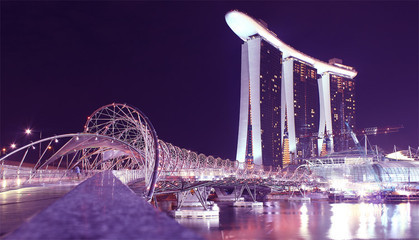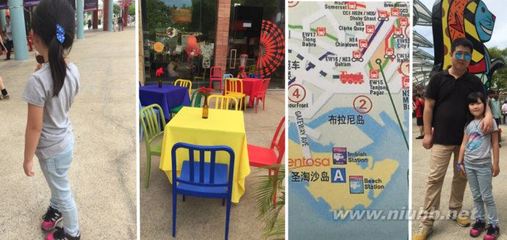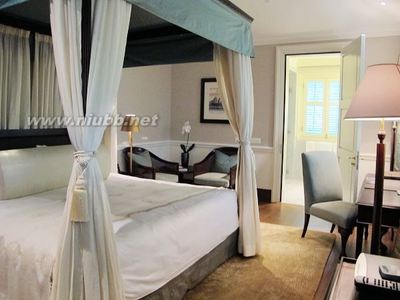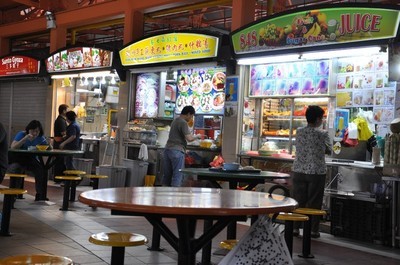Engineering an Iconinstallment loans
Figure 1: The Marina Bay Sands Integrated Resort has become the crown jewel of Singapore's recent development along Marina Bay. Courtesy of Darren Soh.
The Marina Bay Sands Integrated Resort is part of a bold new development initiative within Singapore’s Marina Bay district. This $5.7 billion resort encompasses nearly 10 million square feet of mixed-use development and features three 55-story luxury hotel towers housing 2,560 rooms and topped by the 2.5 acre landscaped rooftop SkyPark . The resort also boasts an iconic museum, two steel and glass pavilions within the Bay itself and accessible by underwater tunnels, a 1.3 million square foot convention center, two 2,000 seat performance theatres, and over 1 million square feet of casino, retail, and restaurant space (Figure 1).
This article introduces the structural design of the 55-story Marina Bay Sands Hotel and SkyPark. A future article will discuss the engineering design of the other structures of the complex.
Collaboration
Building upon a strong and established relationship of collaborative design, Moshe Safdie invited the Boston office of Arup to join their multi-disciplinary team assembled to compete for the design of this new resort. The competition ran from January through March of 2006, and the Singapore Urban Redevelopment Authority (URA) announced the winning design in June of 2006.
In order to meet a 2010 completion date, substructure and geotechnical work went to bid just three months after the project was awarded. Conceptual and Schematic designs were developed in Boston with Safdie Architects. The Boston-based Arup team grew quickly as the design concepts developed, ultimately mobilizing key staff from Arup offices around the world including New York, San Francisco, Los Angeles, Hong Kong, Sydney, Melbourne, Brisbane, and Singapore. This global team, including Aedas in Hong Kong and the owner in Las Vegas and Macau, put the latest three-dimensional documentation and telecommunication tools to immediate and effective use in order to coordinate efforts across multiple continents simultaneously.
Hotel Towers
Construction of the 55-story hotel towers was on the critical path. As such, the design of these one-of-a-kind buildings became an early focus for the AE team. The base of the towers flare to create a common, contiguous tapered lobby atrium running the length of all three towers. The taper of the base created a significant technical challenge because of the form’s asymmetry and because the curved eastern legs cause each tower to lean against the opposing vertical legs (Figure 2). As a result, the primary lateral force demands imposed on the building are governed by the effects of gravity rather than either wind or seismic effects.
Figure 2: The hotel’s south tower rises majestically over the contiguous lobby below. Courtesy of Timothy Hursley.
Structural Flare
Reinforced concrete shear walls, varying in thickness from 28 inches at their base to 20 inches at higher floor levels, are located on 33-foot centers within each of the three towers. The shear walls serve as the primary vertical and transverse structural system of all three buildings. Additional concrete core walls located within both legs of each building restrain the hotel in the longitudinal direction and help prevent out-of-plane buckling of the relatively narrow shear walls within both legs of the towers. Indeed, the requirement for such restraint was established very early in the design following rigorous buckling analyses of both legs. Post-tensioned 8-inch flat slabs span directly between the shear walls. This arrangement maximizes structural efficiency and creates a simple floor slab solution that can be built rapidly. The flat slab scheme also provides flexibility in the hotel room layout, accommodates a relatively tight 9-foot 10-inch typical floor-to-floor height, and accommodates flexibility of building services distribution and coordination throughout each floor.
Story-height steel trusses located within the Level 23 mechanical floors connect the legs of the tower and resist the large shear forces that occur where these meet above the central atrium. At ground floor level, the base slab is post-tensioned to resist the horizontal thrusts generated by the inclined legs (Figure 3).
Figure 3: Lateral stability system of the hotel towers. Courtesy of Patrick S. McCafferty.
Designing for Construction
Because of the extreme flare of the legs of the towers, the opposing shear walls tend to flex and drift laterally during construction. It was therefore crucial that the design carefully consider the construction sequence; a simple in-place structural analysis would be inappropriate. To this end, Arup conducted a series of construction stage analyses of various erection scenarios early in the design process in order to quantify the amount of displacement and locked-in stress that would accumulate within each tower under each scenario. The study concluded that substantial temporary works would be necessary to properly limit both effects, but that some degree of locked-in stress could not be avoided. During the Tender Process, the engineering team worked closely with the hotel contractors to devise a scheme that utilized temporary shoring to brace the inclined shear walls against the vertical walls to good effect (Figure 4). Additional studies demonstrated that by introducing prestress within both the vertical and inclined shear walls, these movements and resulting stresses could be further reduced. A final construction stage analysis of the chosen method of erection was then conducted to serve as a benchmark for construction. As the towers were erected, a real-time monitoring system was implemented to compare the actual stress levels against this benchmark, enabling back-analysis and design modification of the constructed tower in the event that the actual measurements deviated from the targets.
Figure 4: Temporary shoring of the hotel towers during construction minimized the amount of locked-in stress accumulated within the opposing legs of each building. Courtesy of Arup.
Measurements of the walls included the:
angular rotation at the top of the tower
maximum displacement of elevation in all three axes
differential movement between vertical and inclined walls
differential movement between adjacent wall bays
differential movement among all three towers (which affects the support provided to the SkyPark)
In addition, immediate displacements arising from self-weight effects were offset via pre-camber during construction. However, because of their asymmetry, further complicated by concrete creep and shrinkage effects, the towers are expected to continue to deform laterally until these movements converge after approximately 30 years. These predicted long-term displacements have been accounted for in the design and specification of the vertical transportation systems, core layouts, building services, and building finishes and fa?ade details.
Figure 5: The SkyPark appears to float high above the hotel towers. With a cantilever of 218 feet, the roof deck is the longest habitable cantilevered observation deck in the world. Courtesy of Arup.
SkyPark
At 1,115 feet long, 131 feet wide, and cantilevering 213 feet at an elevation of over 650 feet above grade, the hotel rooftop SkyPark is the world’s longest habitable cantilevered observation deck and has become a symbolic icon for Singapore in the process (Figure 5). This feature component boasts 2.5 acres of landscaped gardens comprising 250 trees up to 26 feet in height and over 650 plants, necessitating in excess of 81,000 cubic feet of soil; signature restaurants; a 495-foot long infinity edge swimming pool containing over 375,000 gallons of water, and an observation platform offering unrivalled 360 degree views of the Bay and surrounding city (Figure 6). To be successful, the design had to reconcile several competing demands: the aesthetic goal of creating an elegant park high above the towers, the minimum weight and efficiency demands required to limit the adverse effects on the towers below, and the constructability requirements necessary to enable pre-assembly and rapid construction on site.
Figure 6: The SkyPark’s infinity edge pool offers commanding views of Marina Bay and Singapore’s central business district beyond. Courtesy of Timothy Hursley.
Structural Optimization Studies
A number of framing options were considered for the SkyPark early in the design process. These included various truss, beam, steel diagrid, and segmented hollow concrete bridge alternatives, among others. All such schemes were assessed for both their weight and ease of construction. The design team, in conjunction with the fabricators and erectors, converged upon a system of post-tensioned segmental steel box girders 33 feet deep by 12 feet wide with 13/8-inch sidewalls and 23/8-inch flanges as the primary structural system for the cantilevering segment, and a system of primary steel bridge trusses for those segments spanning between the hotel towers. The bridges directly atop each tower are supported on raking steel "V" struts extending from the hotel roof directly over the concrete shear walls. The segments between each tower span as simply-supported trusses onto the ends of the adjoining segments.
The relative displacements of all three towers vary dramatically, owing to their subtle geometric differences. Movement joints located between each tower accommodate such differential movements arising from thermal expansion, wind-induced movements, and other time-dependent lateral movements generated from creep and shrinkage arising from the asymmetry of the towers. Careful detailing through the infinity edge pool accommodates these joints and gives the impression of a clean monolithic roof deck running continuously across the towers.
Another important consideration in the design of the SkyPark cantilever was its response to wind-induced vibrations, and vibrations arising from rhythmic human activity such as dancing and running. The introduction of a 5-ton tuned mass damper within the design of the cantilever served to mitigate these effects. Subsequent dynamic testing of the completed SkyPark has verified the performance of this system.
Construction Sequence
The SkyPark was prefabricated off-site in 14 primary segments. The bridging sections extending between adjacent towers each consist of three 400-ton bridge trusses that were pre-assembled at grade. These were then strand jacked into place over a span of 16 hours. The final cantilevering portion was likewise prefabricated in segments at grade to ensure proper fit-up. The entire assembly was then disassembled and each segment was hoisted in turn via strand jacks cantilevering from a moveable gantry attached from secondary beams at roof level, themselves spanning between the main box girders of the previously installed segment.
In total, over 7,000 tons of SkyPark steelwork was erected in just 13 weeks.
Conclusion
The overall form of the Marina Bay Sands Hotel was driven by the architectural requirement for a continuous atrium running the length of all three towers. The resulting geometric flare was resolved structurally via prestressed concrete base slabs and multi-story shear trusses located between opposing building halves through the mid-level mechanical rooms. The hotel’s asymmetry demanded detailed construction sequence analyses to assess the towers’ continual deflection during erection. Moreover, the unique form of each tower resulted in differential movements under imposed load, which further complicated the engineering design of the rooftop SkyPark and its support. Each of these challenges was addressed and resolved through close collaboration among the design, construction, and client teams (Figure 7).?
Figure 7: The iconic Marina Bay Sands Integrated Resort has become a shining beacon for Singapore. Courtesy of Darren Soh.
Patrick S. McCafferty, P.E. (Patrick.McCafferty@arup.com) is the Structural Engineering Practice Leader for Arup in Boston and served as Arup’s US-based Project Manager for the Marina Bay Sands Integrated Resort.
Daniel Brodkin, P.E. (Daniel.Brodkin@arup.com) is a Principal for Arup. David Farnsworth, P.E. (David.Farnsworth@arup.com) is an Associate Principal for Arup. David Scott, P.E. (David.Scott@arup.com) is a Senior Principal for Arup.
Project Team
Structural, Civil, Geotechnical, Fa?ade, Fire, Traffic, Acoustic and Audio Visual, Security and Risk Engineering, and 3D Building Modeling: Arup
Owner: Las Vegas Sands Corporation
Design Architect: Safdie Architects
Executive Architect: Aedas Ltd. Pte.
MEP Engineers (Design): R.G. Vanderweil, LLP
MEP Engineers (Production): Parsons Brinckerhoff
Landscape Architect (Design): Peter Walker & Partners
Landscape Architect (Production): Peridian International, Inc.
Contractors: Bachy Soletanche (Substructure, Foundations)
JFE Engineering Corporation (SkyPark)

Ssangyong Engineering & Construction (Hotel)
VSL Heavy Lifting (SkyPark)
Yongnam Holdings (Museum, SkyPark)
WIKI LINK: Marina Bay Sands
 爱华网
爱华网



